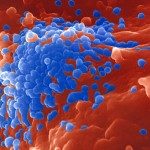Link to Pubmed [PMID] – 17159588
AIDS 2007 Jan;21 Suppl 1:S5-12
OBJECTIVES: Benefits from HAART may be heterogeneous across people living with HIV. We measured the differences in the rate of HAART failure across the various subgroups represented at the level of a country.
DESIGN: We used data from a national representative sample of people living with HIV and followed at hospital in France (ANRS-EN12-VESPA Study).
METHODS: Analyses were restricted to 896 participants on HAART for 6 months or more, who were antiretroviral naive at HAART initiation. Different indicators of treatment failure were defined: immunological failure (absence of an increase of 100 CD4 cells/microl or more); immunovirological failure (CD4 cell count of 200 cells/microl or less and detectable HIV-RNA); clinical failure (occurrence of an AIDS-defining illness more than 3 months after HAART initiation). Differences in the frequency of treatment failure were measured using logistic regression models adjusted for major established determinants of response to HAART.
RESULTS: Overall, 19.6% of the study participants experienced immunological failure, 3.4% immunovirological failure, and 3.0% clinical failure, with substantial variations across the various subgroups. Compared with homo/bisexual men, migrants had higher rates of immunological failure (adjusted odds ratio 2.27, 95% confidence interval 1.14-4.56 for migrant men and 2.19, 1.17-4.08 for migrant women), immunovirological failure (8.23, 1.77-38.33 and 6.91, 1.03-46.32), and clinical failure (4.60, 1.01-20.86 and 4.22, 0.84-21.17).
CONCLUSION: In France, migrants consistently appear to be at increased risk of treatment failure compared with other people with HIV. Understanding the reasons underlying such heterogeneity in terms of living conditions and educational/cultural background will be important.

